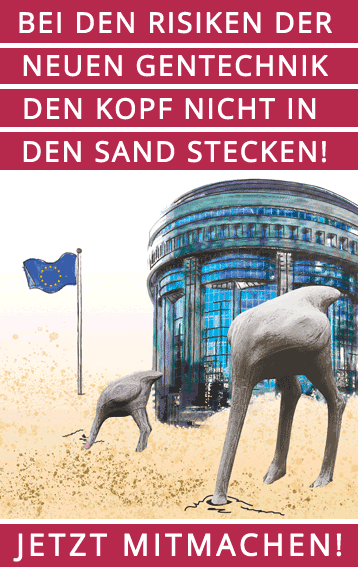EFSA on 30 March published two scientific opinions on applications from Monsanto for the market approval of the genetically engineered maize hybrid MON89034 x MON88017 and for renewal of an existing approval for the controversial MON863 maize. The two applications are not for cultivation but for the import of viable plant material (MON89034 x MON88017) and processed products (MON863).
Scientific Opinion on insect resistant and herbicide tolerant genetically modified maize MON89034 x MON88017 for food and feed uses, import and processing from Monsanto
This opinion looks at the hybrid of two genetically engineered maize lines that are already approved for food and feed uses. The stacked event involved contains three different Bt toxins. The MON89034 line produces the synthetic fusion protein Cry1A105 (comprising parts of Bt toxins Cry1Ab, Cry1F and Cry1Ac) and Cry2Ab2, while MON88017 produces a Bt toxin (Cry3b1) that is also present in MON863 maize. Furthermore, MON88017 expresses the epsps gene which confers tolerance to pesticides with glyphosate as an active ingredient. The hybrid MON89034 x MON88017 was produced by conventional breeding.
Asdocuments of the consultation process show (http://registerofquestions.efsa.europa.eu/roqFrontend/?wicket:interface=...), EFSA ignored scientific concern voiced by several EU member states. For example EFSA does not take into account the fact that possible synergies between the introduced events might emerge from combination and cannot be predicted from the qualities of the parental lines (see Then, 2009). EFSA's assessment is based only on very few tests made using the stacked event, whereas most investigations only concern tests with the parental lines of MON89034 x MON88017. Even substantial doubts regarding the safety of the parental lines were not resolved. For example, a toxicity study of MON89034 indicated detrimental effects on blood and kidney of rats (EFSA, 2008).
The Austrian authority thus comments, pointing towards a basic problem with EFSA's work:
“Therefore it's not regarded as appropriate to apply for approval of the stacked event before clarifying the shortcomings of the single event.”
There is also substantial doubt about the substantial equivalence of MON89034 x MON88017. Monsanto's dossier shows that at least 25 parameters of plant composition are significantly different from parental lines.
Scientific Opinion on Monsanto's application (EFSA-GMO-RX-MON863) for renewal of the authorisation for continued marketing of existing feed materials, feed additives and food additives produced from maize MON863, under Regulation (EC) No 1829/2003
The second opinion regards a new assessment of the highly criticized maize line MON863. This line first came under attack in 2004 when French scientists claimed that MON863 induced changes in the blood and kidney of rats. Further controversy was sparked by the fact that this maize line contains a gene (nptII) which makes the plant resistant to an antibiotic the WHO considers vital for the treatment of tuberculosis.
Two peer reviewed studies were published, putting in question the food safety of MON863 (Seralini et al., 2007; de Vendômois et al., 2009), but EFSA did not draw the conclusion that further tests were necessary. On the contrary, EFSA is arguing that feeding studies with the wholesome genetically engineered plants are not required before market authorisation (EFSA 2007).
References
EFSA (2007) Assessment of Genetically Modified Plants and Derived Food and Feed: The Role of Animal Feeding Trials – Report of the EFSA GMO Panel working group on animal feeding trials: Adopted by the Scientific panel on Genetically Modified Organisms on 12 September 2007. Food and Chemical Toxicology, Volume 46, Supplement 1, March 2008, http://www.efsa.europa.eu/EFSA/efsa_locale-1178620753812_1211902590265.htm
EFSA (2008) Scientific Opinion of the Panel on Genetically Modified Organisms on application (Reference EFSA-GMO-NL-2007-37) for the placing on the market of the insect-resistant genetically modified maize MON89034, for food and feed uses, import and processing under Regulation (EC) No 1829/2003 from Monsanto. The EFSA Journal (2008) 909, 1-30
de Vendômois, J.S., Roullier, F., Cellier, D. & Séralini, G.E., (2009) A Comparison of the Effects of Three GM Corn Varieties on Mammalian Health. Int J Biol Sci 2009; 5: 706-726.
Séralini, G.-E., Cellier, D., Spiroux de Vendomois J., (2007) New analysis of a rat feeding study with a genetically modified maize reveals signs of hepatorenal toxicity. Archives of Environmental Contamination and Toxicology 52, 596-602.
Then, C., (2009) Risk assessment of toxins derived from Bacillus thuringiensis – synergism, efficacy, and selectivity, Environmental Science and Pollution Research, http://dx.doi.org/10.1007/s11356-009-0208-3




